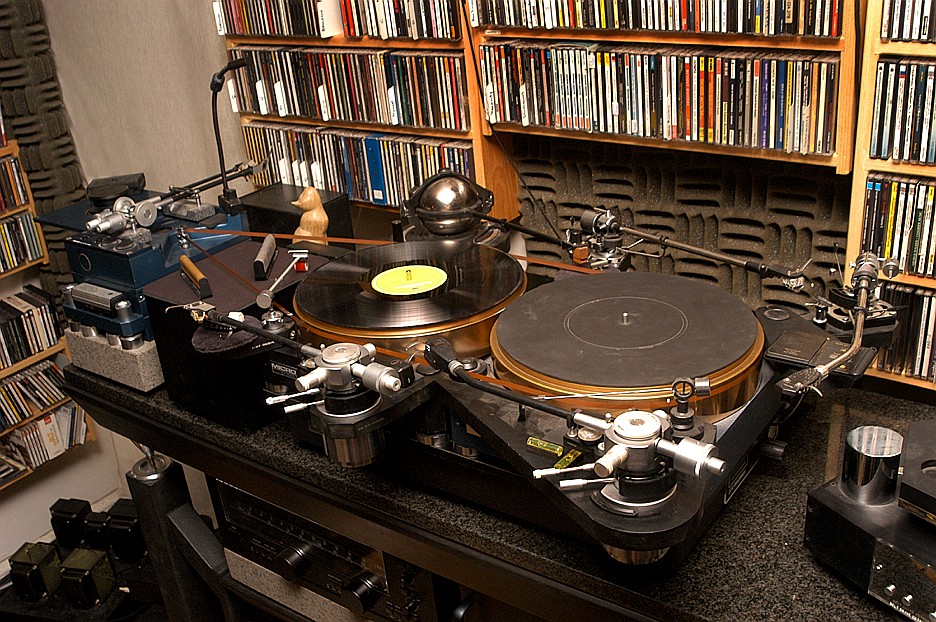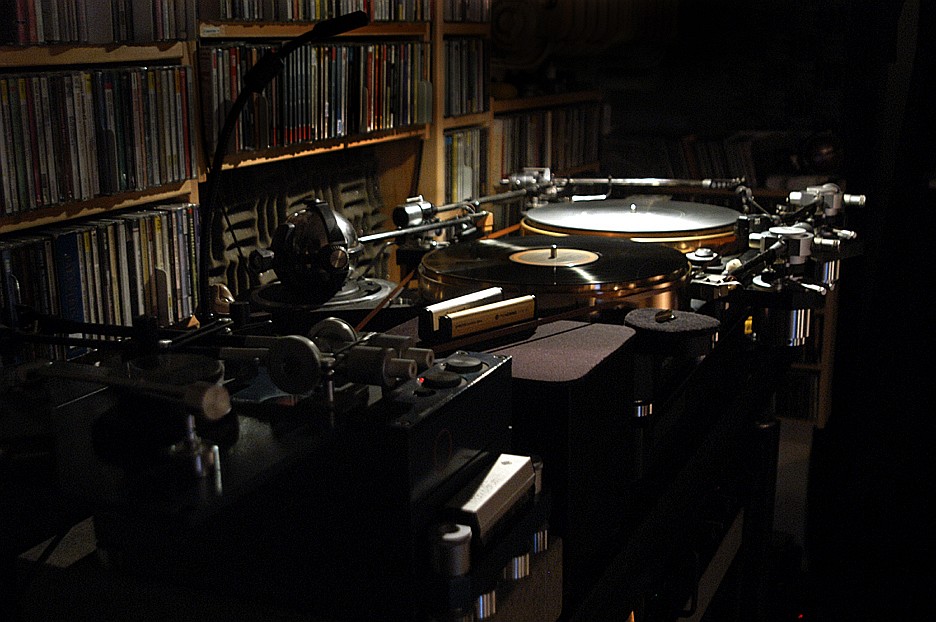|
To Antonio,
it is not necessary to “to find some mat with those characteristics of yours”. The characteristics of mat would be applicable only I context of the TT you use (platter, suspension and so on). With my Micro 8000 that has very dead sounding platter to begin with, I really do not need mat to do anything\ and the very hard rubber TT mars do very well for me. Older Technics turntables employed wonderfully-hard mat, some Micro Seiki mat were nicely hard (actually Micro did some stuff for Technics and at the time they share some product lines). Nakamichi did some very cool, hard and heavy mats. I mean the hard rubber it was the better it would be…. but only in “my case”. If you have a light platter with own sound (most of them do) then the composition and density of the TT mat might be different. Once again - it all should be view in context of entire TT setting (type of patter, existence of clap, shape of the mat, TT topology and many other things) and it should not be juts blindly imitates. Still, I would stay with rubber mats of different density and would not go for any carbon, plastic, subroutine or any other “invention type” of mats.
To the rest folks.
Ok, I did some initial experiments with my Micro Seiki double deck projects.
I spent entire day to move the motors, platters, arms around. It was not always possible to get out the arrangement exactly what I wanted as other then sound considerations dictated what to do (access to the given arm, layout of the cables form the tonearms, the location of the phonostages, the length of arm boards, and many other things). In the end I find that the locations of motor do not affect sound as much as tension of the belt between the platters. I was not able to use two-belts approach as I have no means to maintain the height of the belt between the platters (I would need an idle roll to do so). So, I stack to a single belt of 87” so far.
The final layout that I ended up with largely die to my recent thoughts about my phonostages – I am planning to use juts one phonostages (I will most likely writhe about I future). Therefore, the accessibility to the 6 inputs of my single phonstages and the phonostages position become quite imperative factor.


Above the image now I ended up so far. The phonostages sits between
Above the image now I ended up so far. The phonostages sits between the motor and the TT’s platters. The TT platters together sit atop of a Vibraplane. It kind of all-together comfy to use and I did not detect any problem with sound so far. The middle platter, that presumably should be in heavy “slipping mode”, works juts fine with none measurable speed deviation. For a time being I use tahe magnetic tape but will be ordering a thin and light rubber belts if I settle with this configuration for good.
Rgs,
Romy the Cat
"I wish I could score everything for horns." - Richard Wagner. "Our writing equipment takes part in the forming of our thoughts." - Friedrich Nietzsche
|